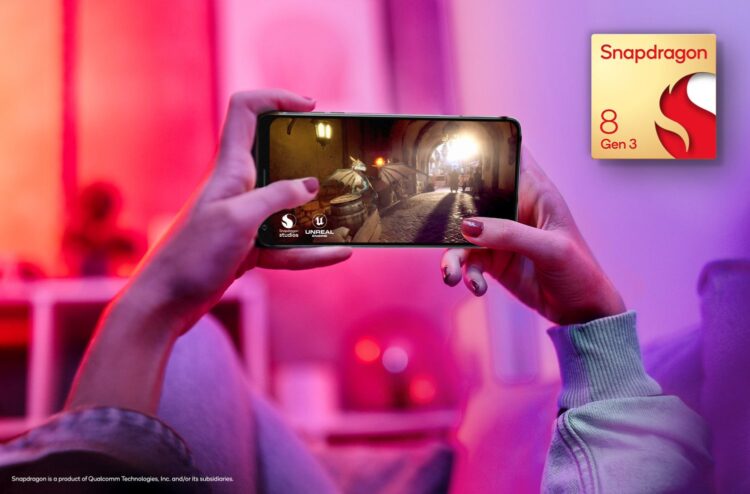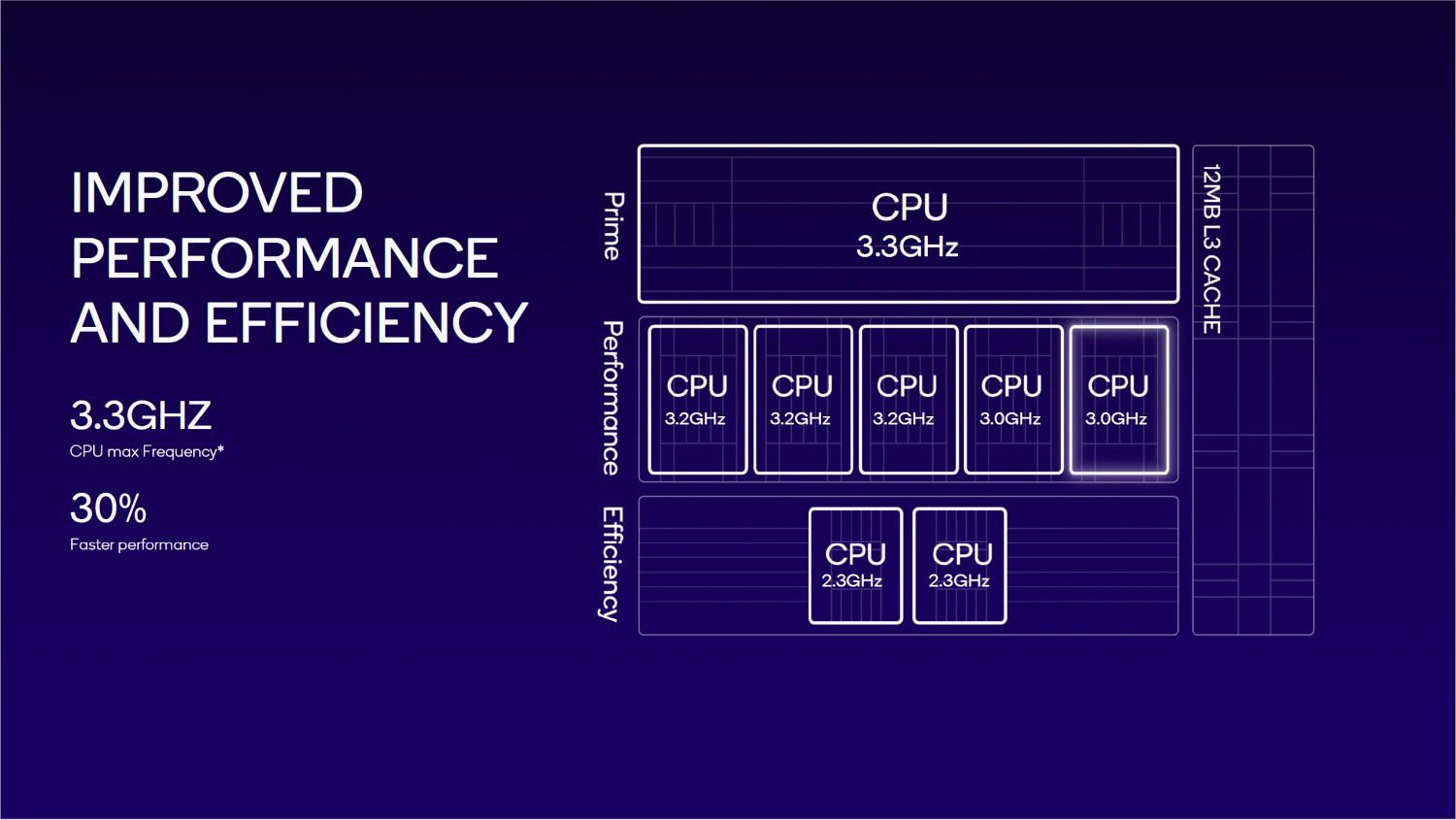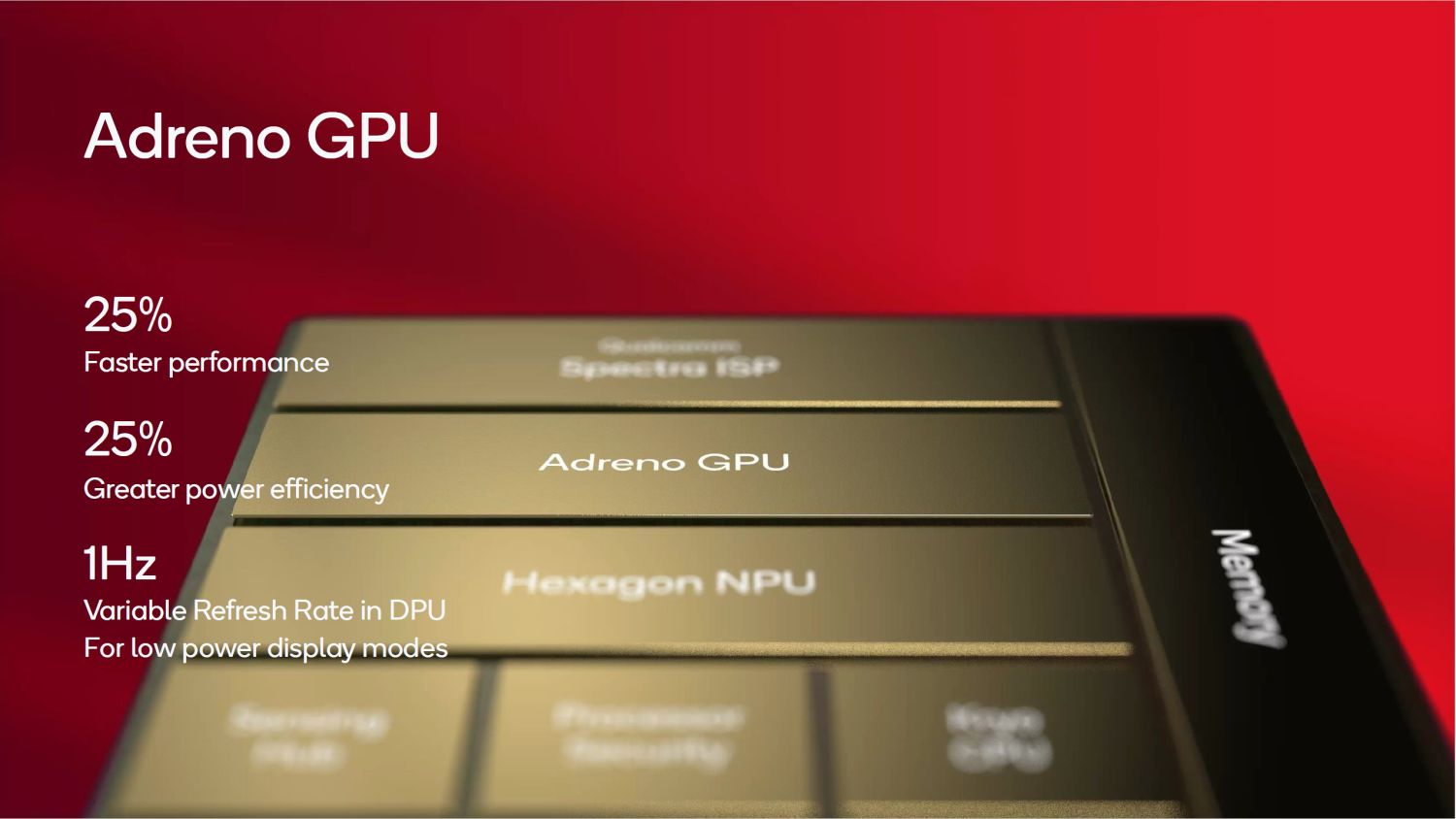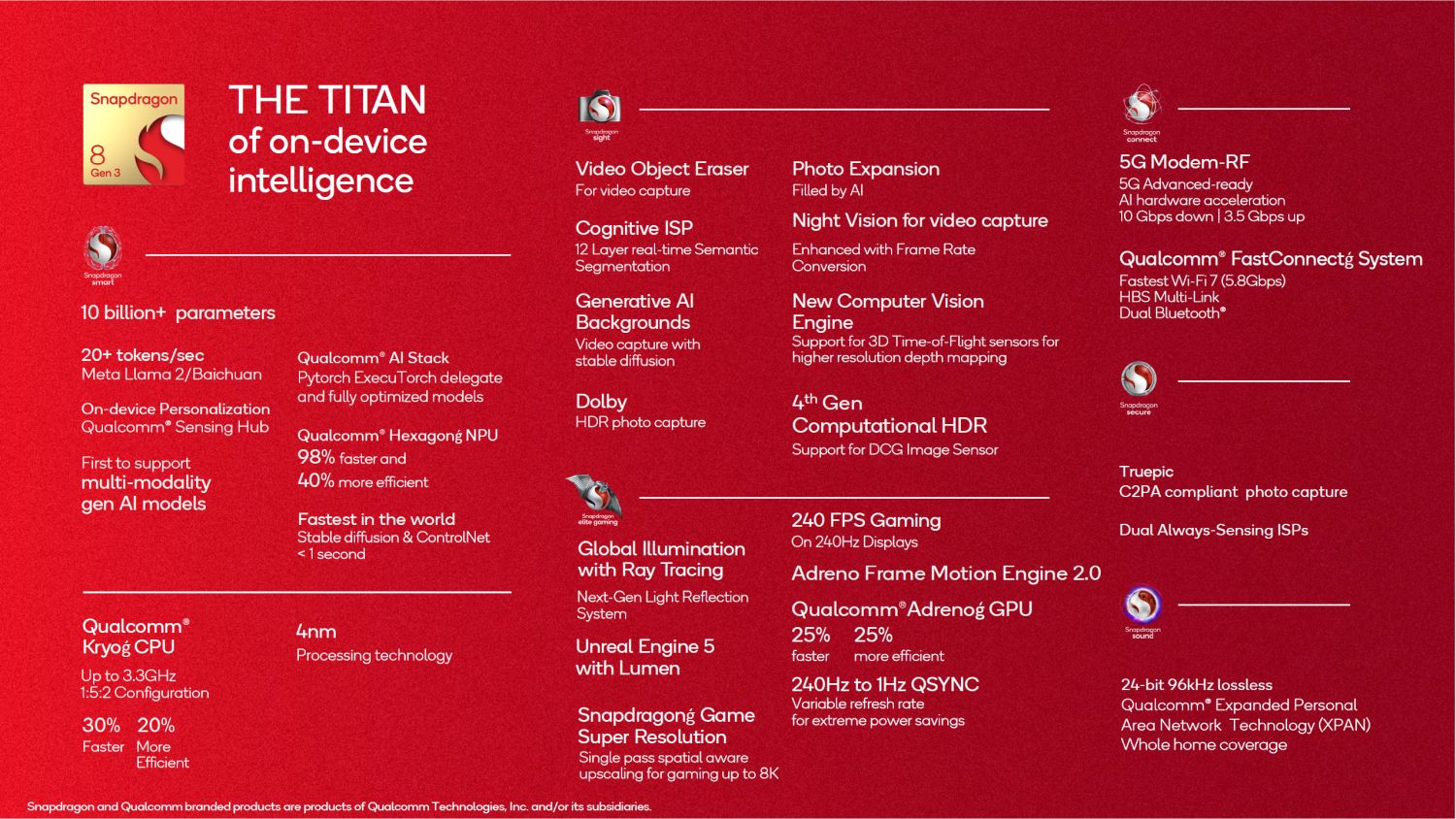The Qualcomm Snapdragon 8 Gen 3 chipset is finally officially and along with it comes a handful of upgrades and improvements over its predecessor, the Snapdragon 8 Gen 2. Specifically, the new chipset brings about upgrades on AI, gaming, audio, and imaging.
Let’s start with the basics first: the internal specifications. Like its predecessor, the Snapdragon 8 Gen 3 is still an octa-core processor, running in a 1+5+2 configuration. The single-core at the top is a Cortex-X4 running at 3.3GHz; the five performance cores below it running at speeds of up to 3.2GHz, while the two efficiency cores at the bottom are set to run at speeds of up to 2.3GHz. Additionally, the entire chipset is still based on Qualcomm’s 4nm process node.

In comparison, in terms of performance, Qualcomm claims that the 8 Gen 3 is approximately 30% faster and 20% more efficient than its predecessor. Other specifications include support for LPDDR5x memory at speeds of up to 4,800MHz and in capacities as high as 24GB.
And then there’s the new Adreno GPU that resides within the SoC; dumping all monikers and simply retaining the “Adreno” label, the new integrated graphics cores are said to be able to deliver “console-defying” levels of gaming, while also being able to support up to 240 fps on 240Hz display. Further, it also supports Adreno Frame Motion Engine 2.0 for smoother playback, plus support for Unreal Engine 5.2.
Performance-wise, the Adreno GPU inside the Snapdragon 8 Gen 3 is approximately 25% faster and more power efficient and more importantly, it is 40% better at ray-tracing than the 8 Gen 2.
Again, there’s no escaping the realm of Generative AI, which is why the Snapdragon 8 Gen 3 also features a new Hexagon Neural Processing Unit (NPU) that now supports Generative AI and is also capable of performing Stable Diffusion.
The use of AI has also been extended to the camera and imaging capabilities of the 8 Gen 3. Specifically, there is a new feature called Semantic Segmentation that basically enhances the vibrancy and details in an image in real-time, instead of post-processing. Adding on to that, Night Vision video can now brighten up a dark scene, and there is also object erasure that allows for unwanted object or people. There is also Vlogger’s View, which allows for video capture from both the selfie and main camera. Lastly, Photo Expansion allows the extension of an image beyond the original photo, plus some HDR improvements.
Finally, the Snapdragon 8 Gen 3 will now support and deliver 24-bit 96kHz lossless audio over Bluetooth, using Qualcomm’s Expanded Personal Area Network Technology (XPAN).
As to when we can start seeing the Snapdragon 8 Gen 3, the Xiaomi 14 will be one of the first flagship smartphones to ship out with the chipset. Other brands that have confirmed their adoption of the SoC include ASUS, Oppo, and even Sony, to name a few.
(Source: Qualcomm, GSM Arena)





